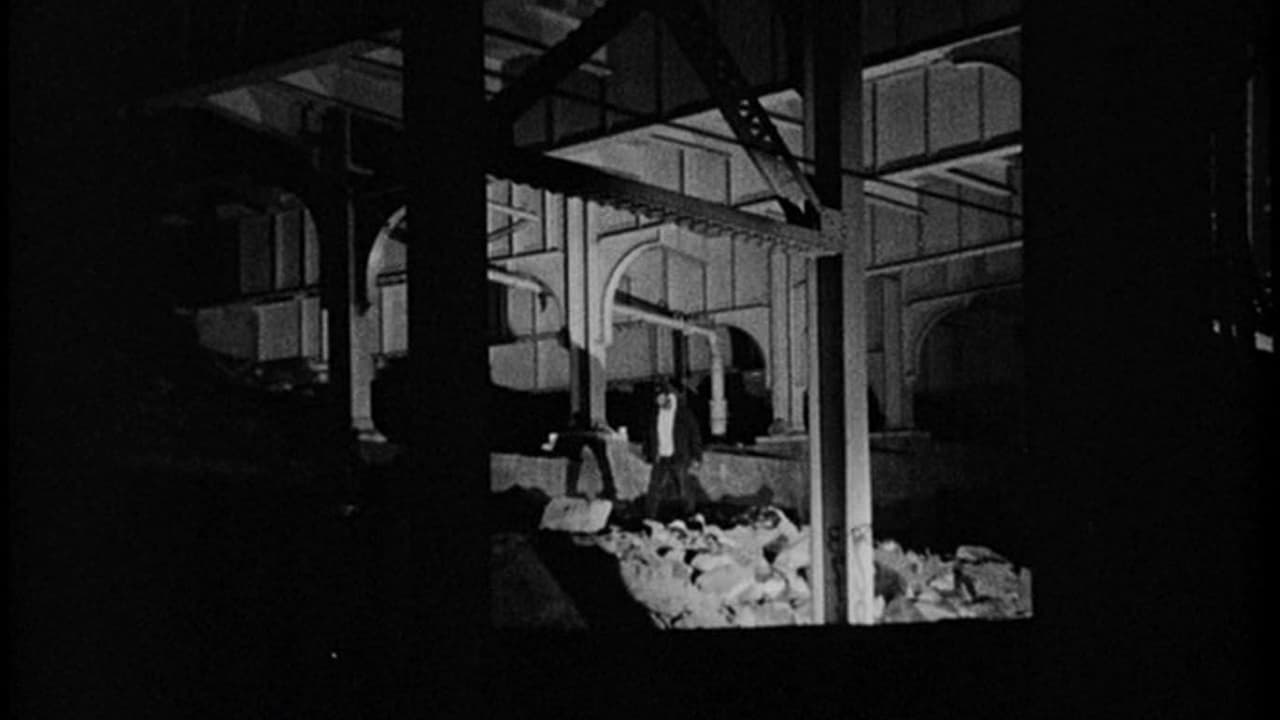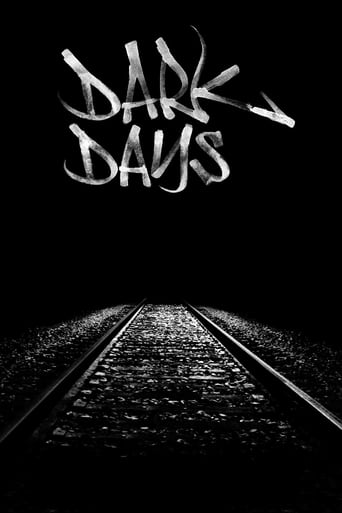



Too much of everything
Clever and entertaining enough to recommend even to members of the 1%
View MoreThe biggest problem with this movie is it’s a little better than you think it might be, which somehow makes it worse. As in, it takes itself a bit too seriously, which makes most of the movie feel kind of dull.
View MoreThis movie feels like it was made purely to piss off people who want good shows
View MoreThere is a tremendous advantage to living in the subway tunnels beneath New York City. You don't get assaulted by kids, harassed by cops or robbed in homeless shelters. You're on your own in ways perhaps some of the most privileged of us could see as a lifestyle for which to yearn.Marc Singer's dumpster-diving exposé documents an bizarrely remarkable world present underneath the streets of Manhattan. In the everlasting blackness of the tunnels, these apparent retreads back to the primordial soup make their homes by assembling sheds out of cardboard and wood, and stuff them with furniture schlepped down from the surface. They have electricity and water that they will never run out of because they don't pay bills on them, they even have bare-necessity stoves, refrigerators and TV set.Life is opportunistic and stumbles on its route everywhere it can survive at all, and there is some sort of evolutionary reversal regarding these subterranean residents, who have found a nook where they can carry on with their lives without the bureaucracy, conflicts, civilization and politics of the world just above them. They are not, they tend to point out, homeless. Singer learned about these people and went looking, and then came back to film them, which they helped to do with their own makeshift resources. Sooner or later making 16mm-shot Independent Spirit Award-winning documentary became his big passion. He poured all of his money into it, until he himself was homeless. It is an indelible experience about people who have tumbled through the crevices but, in spite of everything that has happened in their harrowing pasts, share many of the basic aspirations that make them just like you and me.Several of these people keep cats to keep the rats away. Rats and a lack of protection from harsh weather are the significant day-to-day issues, and stealing, which seems to be rare. In contrast, people help each other out. Some show Singer photos of their pets, who are their families. Aged reminiscences still ache. For instance, Dee is a woman who has a crack addiction. Her story is anyone's worst nightmare. It is a wonder to see her as the sum total of her past decisions, misfortune and tragedy.The occupants climb to the outside for food, most of the time in the garbage, and neat stuff. They rummage around for cans and bottles that can be cash in. Every so often they happen upon things they can sell. To refer to a homeless person as a loser, irresponsible or lazy is either uninformed or badly informed, because he or she have to work without end simply to continue living. To pass them by saying, "Get a job," is an unpleasant misunderstanding, considering their prospects. This unadulterated piece of palpable, tangible reality is the visual rendering of people who persistently aim to sustain some dignity in the face of personal disaster.The film's crew comprised the subjects themselves, who rigged up makeshift lighting and steadicam dollies on Amtrak railroads, some abandoned, some just fortunately not being used at the moment. Singer himself had never made a movie before, and saw the production of this compelling picture as a way to achieve better accommodation for these people. And it won a Best Cinematography Award at Sundance!
View MoreMarc Singer's Dark Days details the 'life-styles' of several people who live (or rather used to live) in self-made homes next to and under the subway tracks in Manhattan. Singer, who used to live homeless, seems to have no qualms about just showing up front all of the grime and sludge and garbage and rats and, of course, darkness that these people dwell in. And it's so simple and precise, for the bulk of it, that one's glad it doesn't go any other way. For Singer it's something of luck- though more-so for those who lived underground- that they finally were put into housing by the end, because it provides just a bit more than what he already had. For the first hour, however, it's completely revelatory in his approach: it's just these guys up on the screen, in the kind of black and white cinematography that's as bare-bones as Clerks.In a look at the homeless there could be the tendency to become schmaltzy or too preachy. Singer allows for room in his film where these people talk to one another, conversations that wouldn't be seen in a more conventional journalism-type piece. And when Singer gets interviews and confessions, they're genuinely moving: we hear how some of these guys got to this point, where their children died or they lost everything and it's not exactly by choice they're at where they're at now. On the other hand, there's also the 'perks' of living in underground squalor, where the problems for homeless living above ground are greater than those who live below, with (surprisingly) electricity and ovens. There's actually a legitimate argument (though legitimate depending on what you think of rats and crack-heads) for living this way if you're homeless.The approach is with the superlative 'direct-cinema' quality that comes with the likes of Maysles movies, but Singer's style is also adept at getting noirish imagery. And the music selections by DJ Shadow is spot-on for the imagery (save for the last few minutes, where Singer slightly missteps in putting music over dialog when in previous scenes there was none). It's a movie that forces one to think about the nature of the lower class, where they aren't always as such; a personal view of race, class, drug-use, and living for the city, without any pretensions about itself. It's some of the most compelling documentary film-making I've seen this decade. 9.5/10
View MoreOne of the best documentaries I've ever seen. It really changes the way you think about homelessness. The cast of real people in this film are refreshingly charismatic. I really didn't expect to be blown away by a film like this, but trust me it's really an excellent work. The fact that Marc Singer had the balls to venture into the cavernous abyss of the Penn Station tunnels for such a long period of time to make this film makes it even more admirable. For me this film to me really has taken the genre to its highest level because the director actually lived and survived with the cast of the film and literally became homeless himself, not to mention letting them take an active role in making it in terms of production. I really can't think of a truer way to shoot a documentary like this one.
View MoreThis movie is amazing. Essentially made by the homeless about the homeless (with some help from an Englishman with no film experience). The 16mm looks amazing, and the darkness of the underground is a great setting. This movie won awards at Sundance and it's not hard to see why, this sort of bleeding heart left story line is always good for a for awards. This film actually deserved all the awards and it's not often I say that about a movie. It is essentially the story of homeless people living in a community under Penn Station in New York, and all the characters are engaging and fun, even if it is hard to understand them at times. This is what documentary film making should be about, this movie wasn't made by a film student, it was made by someone who felt deeply for the homeless and decided to help them. And because of this film all the homeless living there were given homes.
View More